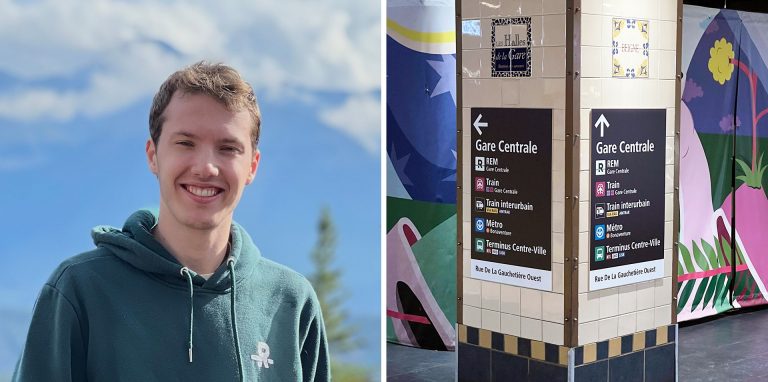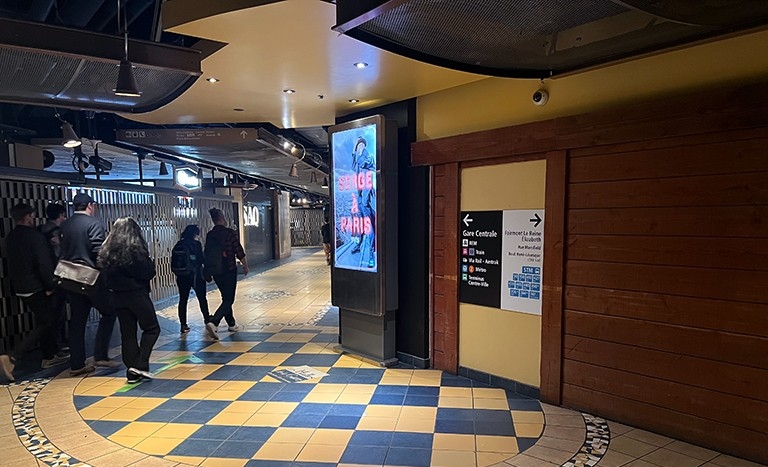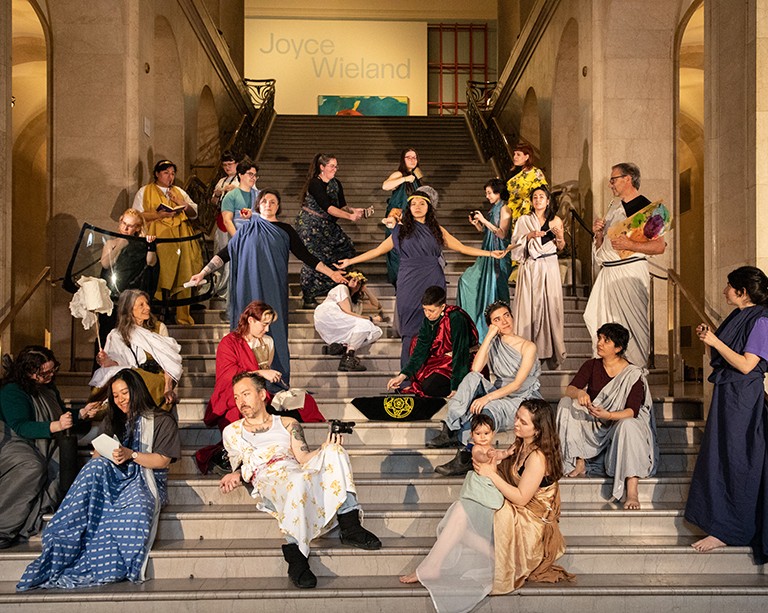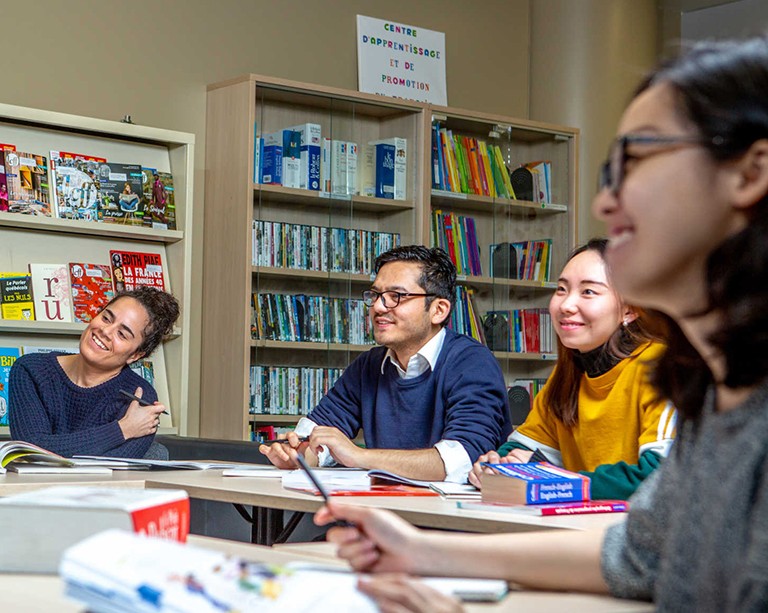Design student Dashiell Friesen is turning heads with an REM signage initiative

Great ideas have a way of getting noticed — and design student Dashiell Friesen’s public transit signage is no exception. The fine arts undergrad has taken it upon himself to design and install much-needed signage along the route between Bonaventure metro station and Montreal’s Gare Centrale (Central Station), where passengers can transfer to the REM light rail system.
Addressing the lack of clear directions for travellers, Friesen’s project was driven by his passion for problem solving and public transit.
“I was just inspired after seeing people getting lost,” Friesen explains. “I really like helping guide people places. Whenever I go to Gare Centrale, I see tourists getting lost trying to find the metro or the REM. I eventually decided, with my interest in graphic design, that I’d just put signs up to help people.”
Friesen created stickers and signs incorporating the REM logo, giving them an official appearance to seamlessly direct traffic between the stations.
In an interview with Global News, Friesen shared that the entire process — designing, printing, and installing — only took one day and cost him less than $50. However, the project itself was no impulsive endeavour.
“I installed the signs in October, but it took me about two to three months of planning. I could’ve gone further with my signs, like showing where the bathrooms or taxis are, but I wanted to focus just on public transit and exterior streets. So, I implemented only that in the end.”

Improving everyday life through design
Friesen, who plans to graduate in June 2025, highlights the personal motivation behind his initiative: giving back to the community. He shares how he drew inspiration from a social media content creator in New York City who redesigns posters for local services, such as dog walkers or tutors, using free graphic design expertise to elevate their branding. “I’m just doing the same for public transportation.”
His studies at Concordia have also played a key role in developing his skills and perspective as a designer. He credits Pata Macedo's Special Topics in Design (DART 398) class on wayfinding and signage, where he analyzed the strengths and weaknesses of signage around the city.
“My classes really encouraged me to look out for these sorts of design flaws — not just in signage but also in urban planning, which is another big interest of mine. I now realize how many aspects of everyday life can be improved, and I want to help with that.”
“Dashiell’s enthusiasm for public transport was irradiating. He was asked to research an existing wayfinding system in Montreal, and he chose the STM. His in-depth research was impressive, beyond the assignment,” Macedo highlights.
“Studying design is about observation, understanding what is needed to find the right solution and creativity. As a teacher, my job is to expose students to different facets of design and inspire them to follow their interests. I plant a little seed and for 12 weeks, water it, and then... they grow to achieve beautiful things.
“Dashiell has improved a whole wayfinding system used in public transportation in a large metropolis, leading to thousands of people moving around efficiently — while he is still in school!”
What’s next for Friesen? He’ll be part of a small exhibition for DART 499 Convergence Arts + Neuroscience + Society at the Montreal Neurological Institute on April 25. His design work continues to showcase how creativity can spark attention, provide real-world solutions and improve the community.
Read more about Dashiell Friesen’s improvements to the STM and REM signage and learn about the DART 499 exhibition on April 25 featuring his work.


